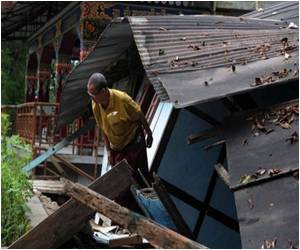
"Helicopters are being employed to evacuate people from inaccessible areas and adhoc helipads are being constructed at remote and inaccessible areas," an official statement said.
Officials said the number of dead bodies seen from helicopters in Barpak is around 150 at this village, around 80 km from Kathmandu and right at the epicentre.
"Around 60 people are already there. This includes a medical team of 11-12 people and engineering task force of around 40 people," an army official said. "We will send 200-300 people there... that is the area most effected."
The team at Barpak will be under Brigadier J. Gamlin of the Indian Army. Four Dhruv Advanced Light Helicopters and two Cheetah helicopters are under induction to Pokhara, where a helicopter base is being established.
Three field hospitals, 18 medical teams and one engineering task force with five earthmoving equipment are already in place in the affected areas. Satellite phones, blankets, and tents have been sent, and more is on way. The army is now considering using roadways to send the relief material. Meanwhile, the pension paying office at Pokhara is functioning as a Multi-National Coordination Centre.
Advertisement








